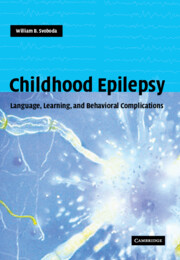Book contents
- Frontmatter
- Contents
- Preface
- Glossary
- 1 Looking ahead
- Part I Speech and language problems
- 2 Language: the challenge
- 3 Speech, language, and communication
- 4 Speech and language problems in epilepsy
- 5 Seizure types and speech and language risks
- 6 Language regression with epilepsy syndromes
- 7 Other epilepsy language syndromes
- 8 Seizure-management effects
- 9 Evaluation of speech and language problems
- 10 Management of speech and language problems in epilepsy
- 11 Behavior consequences
- Part II Learning problems
- Part III Behavior problems
- Index
- References
3 - Speech, language, and communication
from Part I - Speech and language problems
Published online by Cambridge University Press: 26 October 2009
- Frontmatter
- Contents
- Preface
- Glossary
- 1 Looking ahead
- Part I Speech and language problems
- 2 Language: the challenge
- 3 Speech, language, and communication
- 4 Speech and language problems in epilepsy
- 5 Seizure types and speech and language risks
- 6 Language regression with epilepsy syndromes
- 7 Other epilepsy language syndromes
- 8 Seizure-management effects
- 9 Evaluation of speech and language problems
- 10 Management of speech and language problems in epilepsy
- 11 Behavior consequences
- Part II Learning problems
- Part III Behavior problems
- Index
- References
Summary
Communication is the exchange of ideas and feelings between two or more persons. The main method of communication is language, spoken or written. Failure to communicate accurately or adequately may lead to misunderstandings. Subtle language problems often underlie many of the problems people experience at home, at school, in society, and in employment.
Some epileptic children do not communicate well. They experience subtle language problems. They may misunderstand what others say. They may not be able to express themselves so that others can understand. One adolescent complained, “They don't understand me.” The parents complained, “She doesn't seem to listen.” Her teachers noted, “We teach her one day and the next day she has learned nothing.” These problems may vary from day to day. Such misunderstandings may impair emotional development, learning, and later earning.
There are numerous types of speech–language problems reported in children who have epilepsy. Speech problems include difficulties in pronunciation, in the rate and in the flow of speech. Language problems include difficulties in understanding speech sounds, words, and word meanings, as well as problems in expressing ideas in words and in forming the actual words. This may be related to impairments in memory, in remembering what was heard recently as well as what was previously learned. Problems in remembering names is also a common difficulty.
Communication disorders
MacDonald Critchley defined language as “the expression and reception of ideas and feelings.” This does not say how the ideas and feelings are expressed or understood.
- Type
- Chapter
- Information
- Childhood EpilepsyLanguage, Learning and Behavioural Complications, pp. 17 - 30Publisher: Cambridge University PressPrint publication year: 2004



